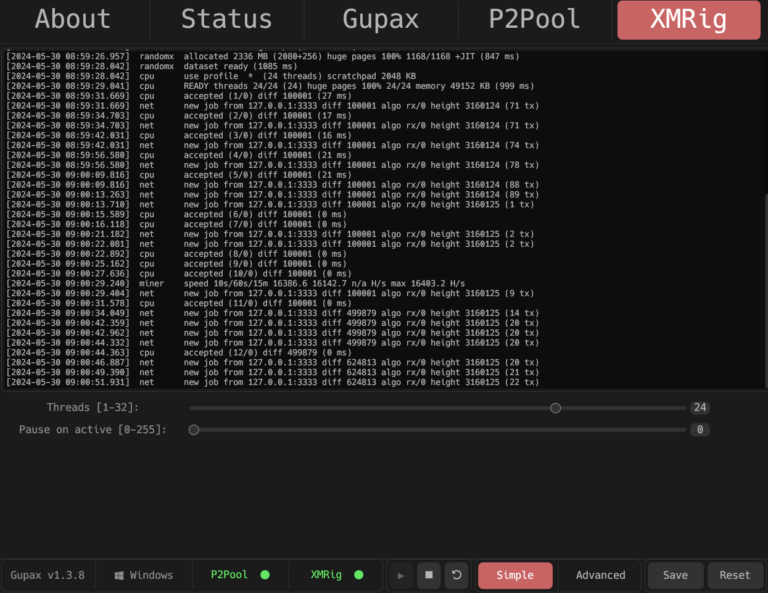Mining Monero
Mining is the act of lending compute power to process and validate new incoming transactions and build new blocks onto the network. In return, miners earn block rewards in the form of newly emitted Monero coins every two minutes. Monero uses the ASIC resistant RandomX CPU mining algorithm, meaning that the barrier to entry for mining is low, allowing anyone to participate with little to no start-up cost using off-the-shelf consumer grade hardware. There is no need to purchase specialized equipment to mine Monero and anyone can get started mining and earning Monero rewards in a matter of minutes.
Monero’s Mining Algorithm: RandomX
RandomX is a proof-of-work (PoW) algorithm developed for Monero that is optimized for general-purpose CPUs. RandomX uses random code execution (hence the name) together with several memory-hard techniques to minimize the efficiency advantage of specialized hardware.
This ASIC resistance lends to Monero’s censorship resistance and overall network resilience.
Read “Monero’s ASIC Resistant Resilience” ➣
Easy Start Monero Mining with Gupax:
Gupax.io – a graphical user interface for mining Monero on P2Pool.

P2Pool: Decentralized mining
P2Pool is a decentralized mining pool for Monero. P2Pool is equivalent to solo mining but with the regular and more predictable payouts of pooled mining. There is no pool operator in P2Pool, therefore greatly benefitting network hash decentralization.
There are two P2Pool pools: P2Pool Main which is recommended for miners with several mining rigs and hashrates above 50KH/s, and P2Pool mini which is recommended for small scale miners with under 50KH/s. Gupax uses P2Pool by default.
P2Pool Github page
P2Pool main pool status page
P2Pool main observation page
P2Pool mini pool status page
P2Pool mini observation page
List of P2Pool compatible Monero Remote Nodes
